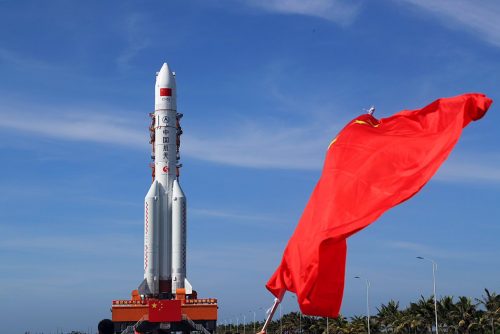An attempted launch of the heavy Chinese launcher Long March 5 ended in failure yesterday, a few minutes after takeoff. China did not specify the reason for the failure, which is its second in two weeks.

The second launch of the Long March 5 launcher (named after "the long parade” in the Chinese Civil War) ended yesterday (Sunday) in failure. The launcher took off at 14:23 (Israel time), from China's new space port Wenchang, located on Hainan Island, near the southern coast of China.
Although the liftoff appeared to have started well, a few minutes later the live broadcast of the launch was interrupted, with no success announced. The official Chinese news agency Xinhua published A short message according to which "the launch of China's heavy launcher, Long March 5, was declared unsuccessful on Sunday evening". The announcement added that an investigation would be launched into the cause of the failure, but did not specify an initial suspicion of its causes or at what stage in the launch the failure occurred.
The launcher carried in its nose an experimental Chinese communications satellite, Shijian 18, SHis weight About 7,500 kg. If the launch was successful, the satellite would be considered one of the heaviest ever launchedGeostationary orbit, a route at an altitude of about 35,000 km. Satellites at this altitude coordinate with the Earth's self-rotation, and are always visible above the same point on the ground.
This was only the second launch attempt of the Long March 5 launcher, whose maiden flight was successfully carried out on November 3, 2016. It is the heaviest launcher in the Chinese Long March family of launchers, and is capable of carrying up to 25 tons to Low Earth Orbit, or 14 tons to Geostationary Orbit .
The launcher is built from two central stages with a diameter of 5 meters, which bring it, together with the nose of the payload, to a height of 57 meters. Four smaller side boosters are attached to the first stage, which assist the launcher in the first minutes of liftoff. The two main stages burn liquid hydrogen and oxygen, while the side boosters burn kerosene and liquid oxygen.

website spaceflightnow.com Reporting The four side boosters of the launcher disengaged as expected, according to a schedule for the planned launch stages, but the first stage of the launcher disengaged from the upper stage later than expected. The upper stage engines did ignite and begin to burn, but a graph displayed in the control center showed that the launcher had deviated from its planned altitude, according to spaceflightnow.com.
Yesterday's failure could delay China's ambitious space program, in which the Long March 5 launcher plays a crucial role. China intended to use the heavy launcher to launch the lunar lander this November Chang-ah 5, which is planned to return a sample from the lunar surface to Earth, for the first time since the Soviet Luna 24 mission in 1976. The heavy launcher will also be used to launch components of China's future space station, which will be built at the beginning of the next decade.
This is also the second failure of a Chinese launcher in the last two weeks - on June 18, a Long March 3B model launcher put its payload, a Chinese communication satellite, into the wrong orbit. The failure It happened in the third and upper stage of the launcher, and even then the Chinese authorities did not specify the reason for the failure. Despite the satellite's mis-orbit, it would still be able to use its propulsion system to reach its operational geostationary orbit, but it would have to use more fuel to do so, shortening its lifetime.
See more on the subject on the science website:
